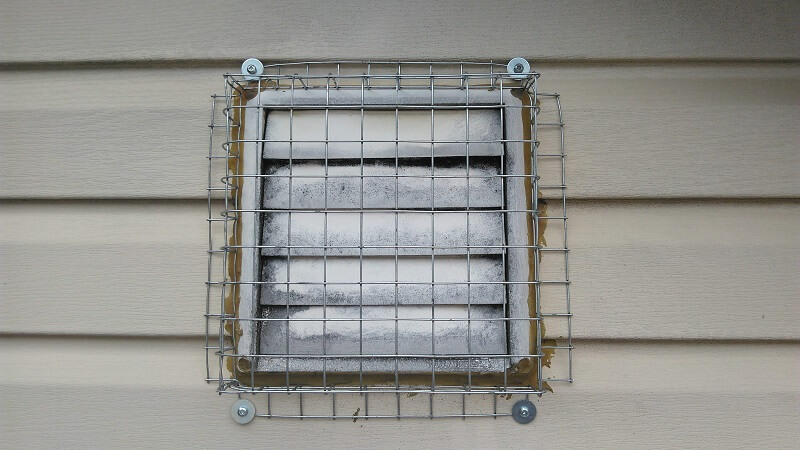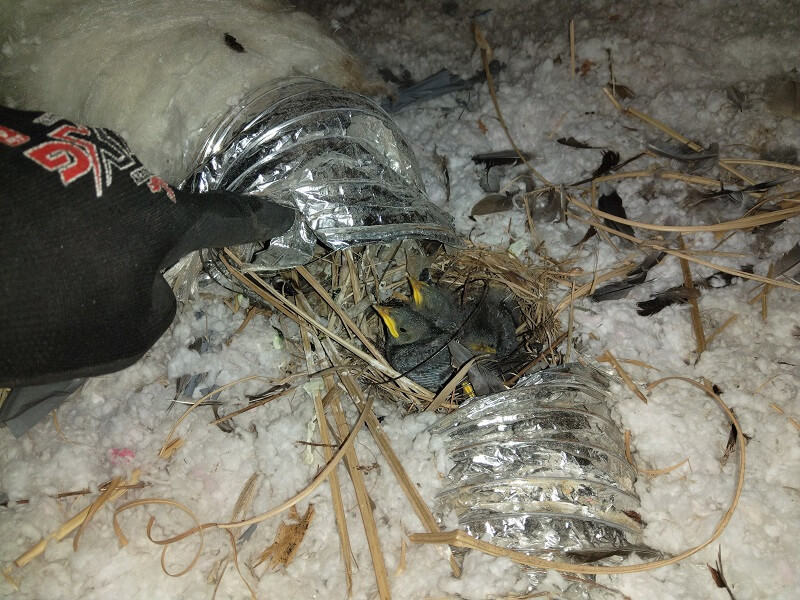BIRD REMOVAL PROCESS
Assess and Remove
The first step in resolving a nuisance bird issue is a thorough understanding of the exact nature of the problem. Our customized removal plans take into account the species of bird involved, the affected areas of the home and the time of year.
Clear and Clean
Birds can be messy, their nesting material and droppings can cause home damage and result in unsanitary conditions. As part of the process our trained technicians will remove nests from vents, soffits and balconies and safely scrub away unhealthy droppings.
Prevent and Protect
Our prevention plans are customized to address the specific bird threats your home faces. Our technicians are trained to install protective barriers and devices designed to make your home inhospitable to birds.
With its acres of dense forests, Anoka County is an ideal environment for all types of wildlife to thrive. The region sits on the outskirts of the major metropolis of Minneapolis, and it is one of the most densely populated suburban counties in Minnesota. While some wild animals have been driven out of the area because of rapid urban development, birds are frequently seen throughout the county.
Most people enjoy watching birds fly around their backyard, but no one wants to have a bird building a nest inside their home. There are so many species native to the area that it is important to know when you should take action for bird removal in Anoka County.

Living With Birds in Anoka County
More than 400 bird species are native to Minnesota. Because so many species live in the region, Anoka County is a great area for bird watching. Unfortunately, the area has also experienced rapid growth in development that has caused many birds to build nests in and around residential buildings.
Birds are adaptable creatures that thrive anywhere they can build nests, and they often find suitable nesting spots on front porches, in barns, near attic eaves and in old outbuildings. You should remove them as quickly as possible to minimize the damage they can cause in your home.
Every year, new construction in Minneapolis provides nuisance birds with ideal perches and nesting grounds on high rise and commercial buildings – and residential areas are no stranger to the growing problem.
Anoka is blooming with forests, green spaces and trees that envelop countless communities. Since birds tend to nest in communities with strong tree canopies, almost every community in Anoka County is susceptible to a bird problem. As a result, businesses and home owners in Anoka County find birds roosting or nesting every year.
How Birds Damage Your Home
Birds build messy nests using a variety of random materials they find. If a bird gets into your attic, it may shred old keepsakes and photos to create scraps that are suitable for nests. The creatures may also steal bits of insulation, carpet fibers, string and scraps of paper to use as nesting materials.
Not only are these nests messy, but they also pose a fire risk. Birds may build nests near electrical outlets or light fixtures where the dry material can easily catch on fire. Removing nests is essential for decreasing the fire hazards in your house.
One of the most common areas for birds to build nests is in your gutters. Your gutters may become deformed from the birds nesting inside, so keeping the creatures away from your home is important for protecting your investment.
While birds are capable of damaging the structure of your home, the biggest hazard of interacting with the creatures is their droppings. Bird droppings carry a host of diseases that are easily contracted if you touch the feces. You can easily come in contact with the feces if a bird is living on your front porch or in another area of your house.
Getting Birds Out of Your Home
Preventing birds from building nests around your house is harder than it looks. The creatures seem relatively harmless so you may think it is a good idea to leave the nest alone until the bird decides to move on, but to minimize damage to your home and reduce the risk of contracting a dangerous disease, it’s best to contact Skedaddle for bird removal in Anoka County.
Our Approach to Bird Removal
The first step in the removal process is to analyze the situation. We want to know how many birds are nesting around your home, and we also need to check each nest for eggs because this information affects how we develop an effective removal strategy. We must use caution if the nest contains eggs to keep the mother from abandoning her babies.
Once we know what we are dealing with, we identify points of entry that allow birds to get into your home. Birds can find small holes in the exterior of a building and use the opening to enter homes. This is why you may find birds in your attic eaves or backyard sheds. Patching these holes ensures the birds cannot return once you remove them.
For many species, we use one-way doors that allow animals to leave buildings safely but prevent them from re-entering, but this tactic is often ineffective on birds. If the animal is living in an enclosed space such as your attic, we may have to help it find the hole it entered through. Once the bird leaves, we can move the nest outside to a more suitable location.
The final step in our removal process is to thoroughly clean any bird droppings we find. We want to minimize the risk of you contracting a dangerous disease, so we clean with special chemicals that remove all traces of germs. We can also show you different materials in your home that a bird could use to make a nest. If you eliminate potential nesting materials, birds are less likely to take up residence if they happen to get inside your home.
Call a Professional for Bird Removal in Anoka County
Although birds are rarely aggressive, they can cause damage to your home. They should be removed immediately when you find them living in or around your house. Skedaddle Humane Wildlife Control uses a variety of humane tactics to get rid of birds without causing them harm or unnecessary distress. If you need bird control services in Anoka County, contact us today.

Bird Facts
FACT:
The state bird of Minnesota is the Common Loon. Loons are waterbirds, and only come to shore to lay their eggs, which is why you are most likely to spot them in the middle of a lake or pond.
FACT:
Birds can build a nest in a few days or it may take them a few weeks to fully complete the job. Starlings are known for building their nests inside the wall vent of a building, causing serious air flow problems.
FACT:
Minnesota is home to approximately 428 different species of birds. Of these species, only about 20 do not migrate for the winter. Both pigeons and starlings stick around in the state year round.
FACT:
All starlings that are found in Minneapolis and all of North America, are descendants of starlings that were illegally released in Central Park. in 1891. A Shakespeare enthusiast named Eugene Schiefflin wanted to introduce all of the birds mentioned in Shakespeare’s poems to Central Park.


